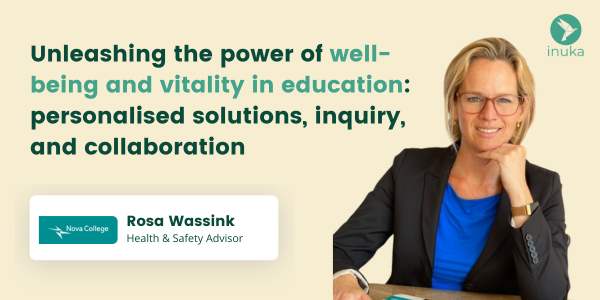Employee wellbeing encompasses the physical, mental, emotional, and social health of workers within their workplace environment. In 2026, it’s more important than ever because hybrid work models, increased mental health awareness, and changing employee expectations have made wellbeing a critical factor in talent retention and business success. Companies investing in comprehensive wellbeing programs see improved productivity, reduced absenteeism, and stronger workplace culture.
What exactly is employee wellbeing and how has it evolved?
Employee wellbeing refers to the overall physical, mental, emotional, and social health of workers in their professional environment. It’s evolved from basic workplace safety measures to encompass the complete employee experience, including work-life integration, psychological safety, and personal fulfilment at work.
The concept has transformed dramatically over the past decade. Traditional workplace wellbeing focused primarily on physical safety—preventing accidents and ensuring ergonomic workstations. Today’s understanding includes mental health support, emotional resilience, social connections, and meaningful work experiences.
This evolution reflects changing work patterns and employee expectations. Remote and hybrid working arrangements have blurred the lines between personal and professional life, making holistic wellbeing support more relevant than ever. Modern employee wellness programmes address stress management, career development, financial wellness, and creating psychologically safe environments where people feel valued and heard.
The shift represents a move from reactive health measures to proactive wellbeing strategies that support the whole person, not just their productivity at work.
Why does employee wellbeing matter more than ever in 2026?
Employee wellbeing matters more in 2026 because workplace dynamics have fundamentally changed, creating new challenges around mental health, work-life balance, and employee expectations. Hybrid work models, increased awareness of mental health issues, and competitive talent markets have made wellbeing a business imperative rather than a nice-to-have benefit.
The hybrid work revolution has created unique stressors. Employees juggle home and office environments, manage digital communication overload, and often struggle with isolation or boundary-setting. These challenges directly impact mental health and job satisfaction, making comprehensive wellbeing support necessary for maintaining productive, engaged teams.
Talent retention has become increasingly difficult, with employees prioritising employers who genuinely care about their wellbeing. People are more willing to leave roles that don’t support their mental health or work-life integration. This shift means companies must invest in wellbeing to attract and keep quality staff.
The business case is compelling: organisations with strong wellbeing programmes typically see reduced healthcare costs, lower turnover rates, decreased absenteeism, and improved employee engagement. In today’s competitive landscape, workplace wellbeing directly impacts your bottom line and company reputation.
What are the main components of workplace wellbeing?
The four main components of workplace wellbeing are physical health, mental and emotional wellness, social connections, and purpose or meaning at work. Each component interconnects to create an employee’s overall wellbeing experience and directly influences their engagement, productivity, and job satisfaction.
Physical health includes traditional safety measures, ergonomic workspaces, and health promotion activities. This might involve standing desks, healthy snack options, fitness programmes, or regular health screenings. In hybrid environments, it also means supporting home office setups and encouraging movement throughout the day.
Mental and emotional wellness covers stress management, resilience building, and psychological safety. This includes access to counselling services, stress reduction programmes, workload management, and creating environments where employees feel comfortable discussing mental health challenges without stigma.
Social connections focus on relationships and community within the workplace. Team-building activities, mentorship programmes, inclusive practices, and opportunities for collaboration all contribute to this component. Remote workers particularly benefit from intentional social connection initiatives.
Purpose and meaning involve helping employees understand how their work contributes to larger goals. This includes clear communication about company values, opportunities for skill development, career progression paths, and recognition programmes that acknowledge individual contributions to team success.
How does poor employee wellbeing impact business performance?
Poor employee wellbeing creates measurable negative impacts including increased absenteeism, reduced productivity, higher turnover rates, decreased innovation, and damage to company culture and reputation. These effects compound over time, creating significant financial and operational challenges for organisations.
Absenteeism increases substantially when employees experience stress, burnout, or mental health challenges. Unwell employees take more sick days, arrive late more frequently, and may need extended leave periods. This creates staffing gaps that disrupt team productivity and increase workload pressure on remaining team members.
Productivity suffers as stressed or disengaged employees struggle to focus, make more mistakes, and complete tasks less efficiently. Creativity and problem-solving abilities decline when people are overwhelmed or emotionally exhausted, directly impacting work quality and innovation potential.
Turnover rates climb when employees don’t feel supported or valued. Replacing staff is expensive—typically costing between 50-200% of an employee’s annual salary when you factor in recruitment, training, and lost productivity during transition periods.
Company culture deteriorates as poor wellbeing spreads through teams. Negativity, stress, and disengagement become contagious, affecting even previously happy employees. This cultural decline makes it harder to attract quality candidates and can damage your employer brand in the marketplace.
What are the most effective ways to improve employee wellbeing?
The most effective wellbeing improvements include flexible work arrangements, comprehensive mental health support, professional development opportunities, meaningful recognition programmes, and creating psychologically safe environments. Success comes from implementing multiple strategies that address different aspects of employee needs.
Flexible work arrangements help employees manage personal and professional responsibilities more effectively. This includes hybrid working options, flexible hours, compressed work weeks, or job-sharing arrangements. Flexibility reduces stress and helps prevent burnout by giving people more control over their work environment.
Mental health support should be accessible, confidential, and varied to meet different preferences. This might include employee assistance programmes, on-site counselling, mental health days, stress management workshops, or coaching services that help people develop resilience and coping strategies through structured coaching methodologies.
Professional development opportunities show employees you’re invested in their future. Skills training, leadership development, mentorship programmes, and clear career progression paths help people feel valued and motivated. This investment in growth contributes significantly to job satisfaction and engagement.
Recognition programmes acknowledge good work and celebrate achievements. Regular feedback, peer recognition systems, awards, and public acknowledgment of contributions help employees feel appreciated and motivated to maintain high performance levels.
Psychological safety involves creating environments where people feel comfortable speaking up, making mistakes, and being authentic. This requires training managers to be supportive leaders, establishing clear communication channels, and demonstrating that diverse perspectives are valued and respected.
How do you measure employee wellbeing in your organisation?
Measuring employee wellbeing effectively combines quantitative metrics like engagement surveys and absenteeism rates with qualitative feedback through focus groups and one-on-one conversations. The most accurate picture emerges from multiple measurement approaches that capture both hard data and personal experiences.
Employee surveys provide baseline measurements and track changes over time. Regular pulse surveys can measure stress levels, job satisfaction, work-life balance, and overall wellbeing. Annual comprehensive surveys offer deeper insights into workplace culture, management effectiveness, and specific wellbeing needs.
Behavioural indicators offer objective data about wellbeing trends. Track absenteeism rates, turnover statistics, productivity metrics, and usage of wellbeing resources like employee assistance programmes. Increases in sick days or decreases in performance often signal wellbeing challenges before they become critical.
Engagement scores correlate strongly with wellbeing levels. Measure how connected employees feel to their work, colleagues, and company values. High engagement typically indicates good wellbeing, while declining engagement may signal emerging problems.
Qualitative feedback through focus groups, exit interviews, and regular manager check-ins provides context for numerical data. These conversations reveal specific stressors, successful wellbeing initiatives, and areas needing improvement that surveys might miss.
The key is establishing regular measurement rhythms and acting on the insights you gather. Wellbeing measurement only creates value when it leads to meaningful improvements in workplace conditions and support systems. Consider conducting an impact assessment to evaluate the effectiveness of your current wellbeing initiatives.
Creating a workplace culture that prioritises employee wellbeing requires ongoing commitment and comprehensive support systems. When you invest in your people’s physical, mental, emotional, and social health, you’re building a foundation for sustainable business success and a positive workplace environment where everyone can thrive. If you’re ready to develop a comprehensive wellbeing strategy for your organisation, get in touch to explore how evidence-based coaching solutions can support both individual growth and business objectives.







